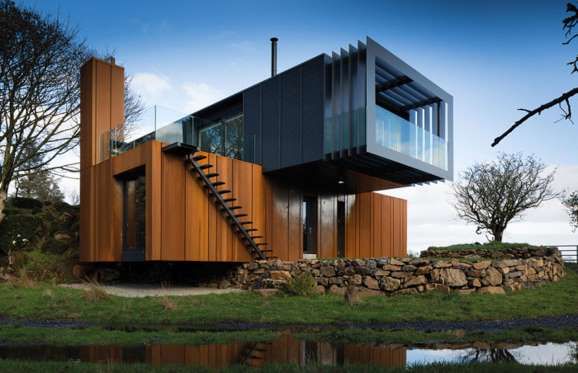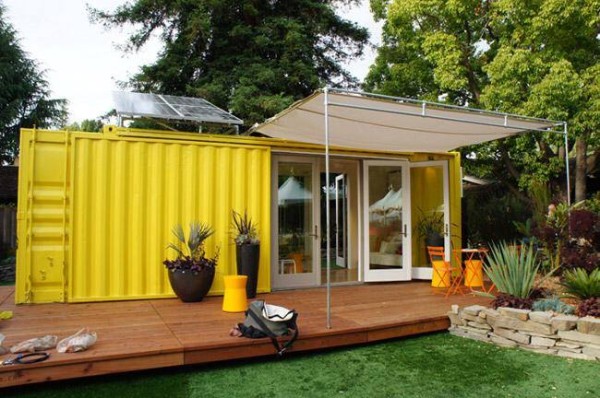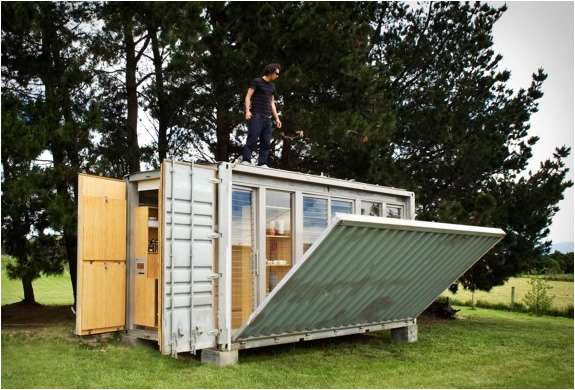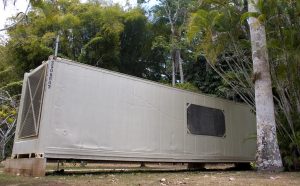

Some of these tiny homes are used as off grid homes constructed in the rural countryside and are fully self sufficient in water and electric. They designed to have as small as possible environmental impact in the location they are placed. Other tiny homes are in towns and cities and there owners live in them all year round. With clever designing they are fitted out with all the modern conveniences and impressive view inside. You can often not belive that this was once a shipping container
Of course all these homes are fixed to one location. But if you are looking for a mobile container home then there plans for these as well. A design from atelierworkshop which is not yet in full production is based on one container. It is made to be sufficient for a small family and unlike other home designs keeps all of its container parts. When the owners want to move to another location, the container is just packed up on it self and just looks like and normal shipping container. It can then be loaded and moved on any container fitted trailer to its new location. While maybe not quite as efficient or as easy to use compared to a caravan, it is certainly a unique design for the versatile shipping container.
While reefer containers are commonly found plying the oceans between continents moving all kinds of products these particular reefer containers are helping to saving several species of frog. In 2010 the Maersk shipping company donated six reefer containers to the Smithsonian Institution and their partners working in Panama City, Panama to help protect and breed various indigenous frogs which were facing extinction. The reefer container have been heavily adapted to create a controlled and protected area. In this area individual environments where made specific to a particular frogs requirement where they could be observed and managed with the hope that the this would help to ensure their on going survival in the wild.
The images below show the outside of the converted reefer containers, and the inside with the individual controlled environments for the frogs laid out.
Both photos are credit of the Smithsonian Institution


